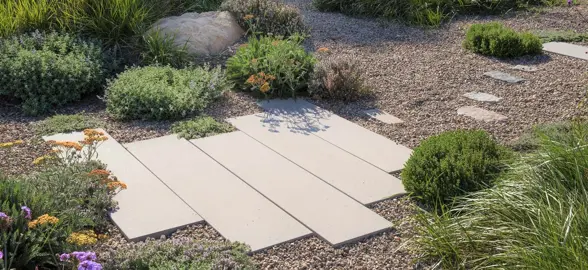African Wild Fig Tree
The African wild fig tree (Ficus verruculosa), also known as the strangler fig or sandpaper fig is a large tree native to sub-Saharan Africa. It's known for its impressive size, aerial roots, and its role in the ecosystem.
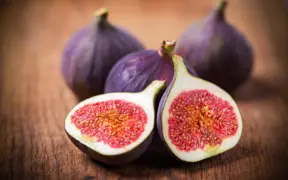
Fig trees (Ficus carica) are a rewarding addition to New Zealand gardens, producing delicious fruit and adding a Mediterranean feel to outdoor spaces. Whether you're planting your first fig tree or looking to improve fruit production on an existing one, this guide covers everything you need to know. From choosing the right spot and variety to pruning, watering, and maintenance, we’ll help you grow a healthy and productive fig tree suited to NZ conditions.
Choosing a Fig tree that works for you can be challenging given the sheer number that are available. Working through the varieties, and so on, can take considerable time. The Plant Company’s series of short articles aims to offer concise and easy to follow advice and recommendations so you can determine the variety for your needs.
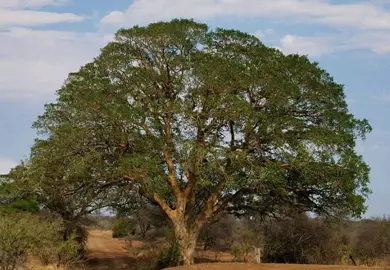
The African wild fig tree (Ficus verruculosa), also known as the strangler fig or sandpaper fig is a large tree native to sub-Saharan Africa. It's known for its impressive size, aerial roots, and its role in the ecosystem.
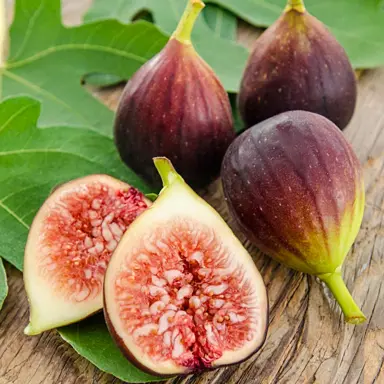
The 'Brown Turkey' fig tree is a popular variety due to its hardiness, reliability, and delicious fruit. Some of its key characteristics include:
Overall, the 'Brown Turkey' fig tree is a versatile and rewarding variety that's well-suited for both novice and experienced gardeners. With its ease of care and delicious fruit, it's a great addition to any edible garden.
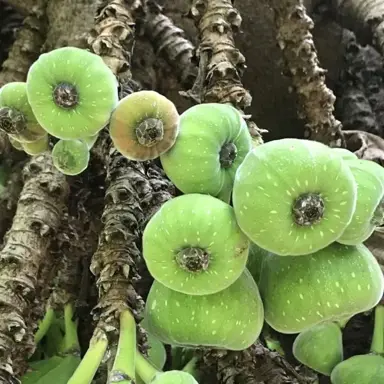
The Elephant Ear Fig Tree (Ficus auriculata) is native to subtropical Asia. It's named for its large, round leaves that resemble elephant ears. Some of its key characteristics include:
Overall, the Elephant Ear Fig Tree is a fascinating and versatile plant with beautiful foliage, edible fruit, and cultural significance.

The Moreton Bay Fig Tree (Ficus macrophylla) is a giant among its kind, known for its impressive size and unique growth habit. Some of its key characteristics include:
Overall, the Moreton Bay Fig Tree is a fascinating and ecologically significant species. While their immense size and beauty are undeniable, it's important to be aware of their potential impact on the environment before planting one.
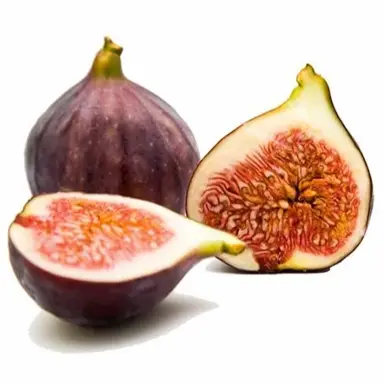
'Mrs Williams' Fig, is a popular variety due to its delicious fruit and vigorous growth habit. Some of its key characteristics include:
Overall, 'Mrs Williams' Fig is a great choice for gardeners in New Zealand looking for a productive and delicious variety with an attractive appearance.
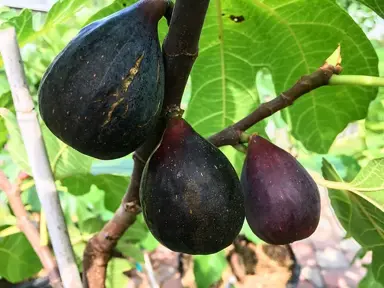
Some of the popular fig varieties grown in New Zealand include:
If you are looking for a delicious and easy-to-grow fruit tree, figs are a great option for New Zealand gardeners.
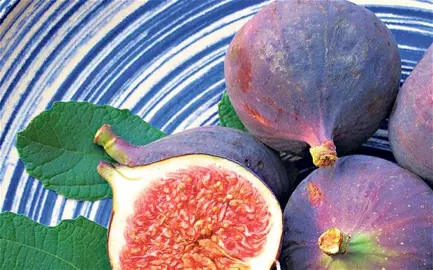
The best fig tree variety for New Zealand depends on your climate, personal preferences, and the intended use of the fruit. Some popular varieties that are well-suited for New Zealand include:

The Cathedral Fig Tree is a massive 500-year-old strangler fig tree located in Danbulla National Park and State Forest, on the Atherton Tableland in Queensland, Australia. It's a popular tourist destination known for its enormous size and impressive root system.
The Cathedral Fig Tree is part of the Wet Tropics World Heritage Area, recognized for its outstanding natural beauty and biodiversity. If you're ever in the area, visiting the Danbulla National Park and State Forest to see the Cathedral Fig Tree is a must-do.
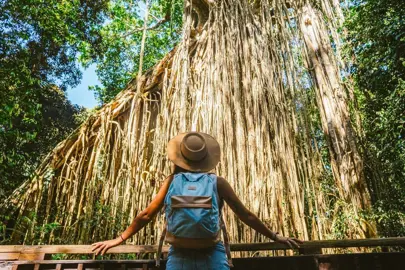
The Curtain Fig Tree is a massive strangler fig tree located in Curtain Fig Tree National Park, Yungaburra, Queensland, Australia. It's one of the largest trees in Tropical North Queensland and a popular tourist destination.
Providing the best fertilizer for Fig trees is important to ensure they thrive. The correct fertiliser depends on whether the plant is grown in a pot or in soil, and getting this wrong can be disastrous for your plants. Our articles provide the best advice about fertilising Fig trees so you can achieve the amazing results you are after.

Fig trees grown in containers require different fertiliser to those grown outdoors in soil. In this instance the correct fertilisers to use are either the container plant fertiliser or fertiliser tablets. Each of these will provide safe, sustained, and complete nutrition to the plant for the next 12-months. Using other types of fertiliser can be detrimental to the plant and may result in plant death.
Foliar feeding using a liquid fertiliser can be undertaken if you have time but this is not essential if container plant fertiliser or fertiliser tablets have been used. If you think the plants need an extra boost or have some yellowing, however, a liquid fertiliser application won’t hurt. A great benefit of foliar feeding is that it helps keep the leaves strong and encourages better fruiting as the nutrition is right where the plant needs it.
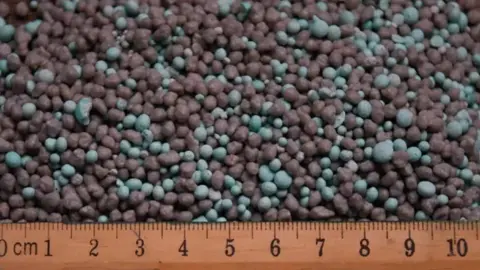
Fig trees are showy plants that require feeding to keep them flowering and looking amazing. A lot of articles have all sorts of advice on this subject which often requires multiple applications, so you use more of their fertiliser. The Plant Company prefers to take a simpler and more environmentally responsible approach. Our fruit tree fertiliser has been specifically blended and developed to give plants an initial boost and then sustained nutrition for 12 months. This fertiliser ensures that nutrients remain in the soil around the plant rather than being lost through the soil profile to where the plant cannot reach it. This also applies to plants grown on sandy soils.
The Plant Company recommends that fruit tree fertiliser is applied to the soil surface in spring just as the plants start their new growth. The Plant Company also advise that no fertiliser is placed in the hole at planting, but rather spread around the soil surface so it can wash through to the roots as it releases.
Foliar feeding using a liquid fertiliser can be undertaken if you have time but this is not essential if fruit tree fertiliser has been applied. If you think the plants need an extra boost or have some yellowing, however, a liquid fertiliser application won’t hurt. A great benefit of foliar feeding is that it helps keep the leaves strong and encourages better fruiting as the nutrition is right where the plant needs it.
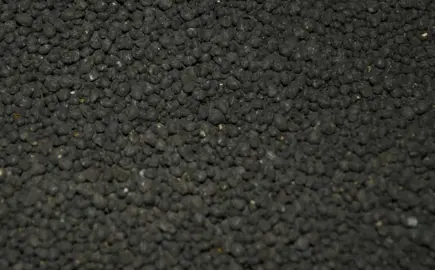
Fig trees are showy plants that require feeding to keep them flowering and looking amazing. A lot of articles have all sorts of advice on this subject which often requires multiple applications so you use more of their fertiliser. The Plant Company prefers to take a simpler and more environmentally responsible approach. A suitable organic option is The Plant Company’s organic fertiliser which is applied in spring and again in autumn and will keep them well fed. You can safely apply generous amounts of this fertiliser to plants without risk of injuring the plants. More details about this fertiliser are provided with the product.
This series of articles answers many of the frequently asked questions about Fig trees, such as how fast they grow, their hardiness, and more!

Yes, fig trees are poisonous to dogs. All parts of the fig tree, including the leaves, branches, bark, and fruit, contain a substance called ficin which is toxic. If your dog ingests any part of a fig tree, they could experience vomiting, diarrhoea, drooling, or skin irritation. In severe cases, ficin poisoning can lead to more serious problems. If you suspect your dog has eaten part of a fig tree, it's important to contact your veterinarian immediately.
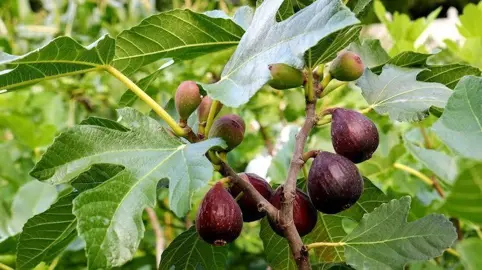
Yes, you can eat figs from a fig tree. In fact, many people consider figs straight off the tree to be the best way to enjoy this fruit. The figs should be ripe before you eat them. Ripe figs will be soft to the touch and have a sweet, honey-like smell. Unripe figs will be hard and green, and they won't taste very good. The Plant Company recommends washing the fruit before you eat them in vase there were bird droppings on the skin. You can eat the skin of the fig, but some people prefer to peel it. The skin is a good source of fibre, so you may want to leave it on if you're looking for a boost of fibre in your diet. The seeds in the fig are edible, but they can be a bit crunchy. You can either eat the seeds with the flesh, or spit them out.
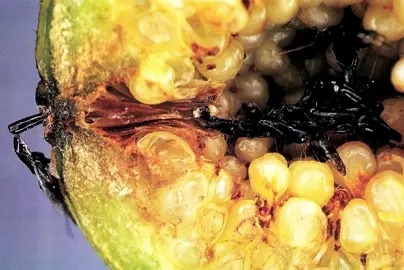
Fig trees do attract wasps, but it's a specific type of wasp with a mutually beneficial relationship. Fig trees rely on a particular wasp species, called fig wasps, for pollination. When a fig is ready, it emits a specific scent that attracts only female wasps of that species. The fig has a tiny opening that the female wasp can squeeze through and enter the fig. Interestingly, she often loses her wings and antennae in the process, but that's okay because she won't need them anymore. Inside the fig, the wasp lays eggs and pollinates the tiny flowers as she moves around. This ensures the development of the fig fruit. The next generation of wasps hatch inside the fig, and they chew their way out, carrying pollen with them to fertilize other fig trees.
It is important to note that over-ripe figs or fallen fruit might attract other wasp species that are just looking for a sugary snack. The best way to avoid these becoming a problem is to pick the fruit and clean up any fallen fruit.
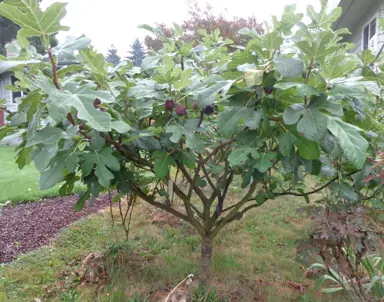
Fig trees are deciduous trees and drop their leaves during winter. However, fig trees grown in warm climates with mild winters might not lose their leaves or may only experience a partial leaf drop. Therefore, whether they drop their leaves or not depends entirely on the climate where they are grown.

Fig trees thrive in full sun. Ideally, they need at least 6 to 8 hours of direct sun per day for optimal growth and fruit production. Sunlight plays a key role in sugar production within the figs. More sunlight translates to sweeter and more flavoursome fruit. It also encourages better flowering and fruit development.
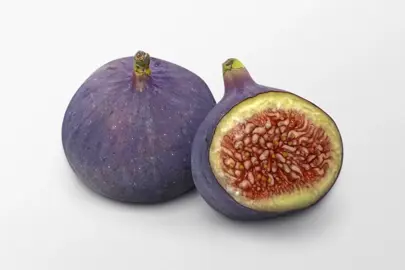
Most common fig trees are self-fertile, meaning they produce both male and female flowers and don't need another tree for pollination. These are the most common types of fig trees grown for their fruit, and they'll produce plenty of figs even if you only have one tree. However, if you want to maximise the fruiting potential from your tree, The Plant Company recommends adding in a second variety that will cross pollinate and increase the fruiting and yields from both varieties. It will also extend the fruiting season.
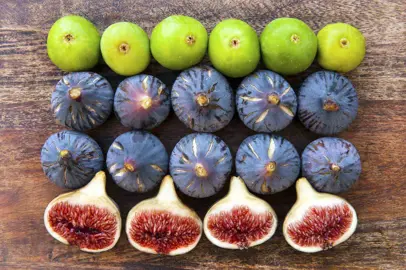
Fig is the edible fruit of a species called Ficus carica, a small tree belonging to the flowering plant family Moraceae. It's one of the first cultivated plants and is appreciated for its delicious taste and health benefits. Fig trees are native to the Mediterranean region and western Asia but are now grown commercially in many parts of the world with warm climates.
There are over 800 species in the genus Ficus, but Ficus carica is the only one that produces edible figs. However, there are many cultivars of Ficus carica that differ in size, flavour, skin colour, and ripening times. Some of the most popular fig cultivars include:
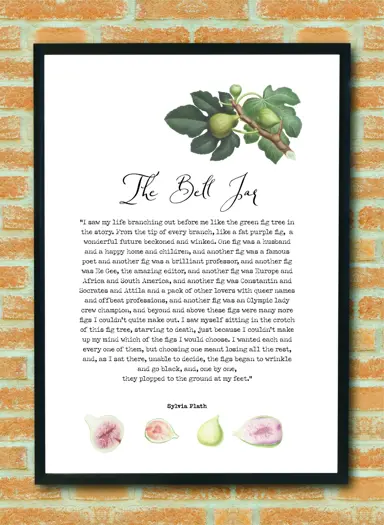
Sylvia Plath has a famous passage in her novel "The Bell Jar" that uses a fig tree as a powerful metaphor. In the novel, the protagonist, Esther Greenwood, feels paralyzed by indecision and a sense of emptiness. She imagines herself sitting beneath a fig tree laden with ripe figs, representing all the potential paths her life could take. But she's overwhelmed by the choices and can't bring herself to pick one, fearing she'll miss out on all the others. As time passes, the figs begin to spoil and fall to the ground, symbolizing the lost opportunities and the consequences of her inaction.
This passage has become an iconic image in Plath's work. It captures the anxieties and frustrations of feeling stuck and unable to make choices, a theme that resonated deeply with many readers.
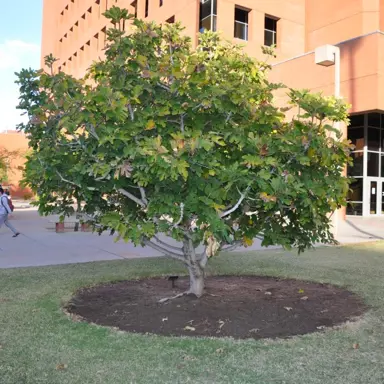
Fig trees can grow to be quite large, depending on the variety, climate, and pruning practices. In ideal growing conditions, some varieties can reach 15 metres (50 feet) tall. However, it's more common for mature fig trees to be 3-9 metres (10-30 feet) tall. Dwarf varieties typically reach heights of around 1.5-3 meters (5-10 feet).
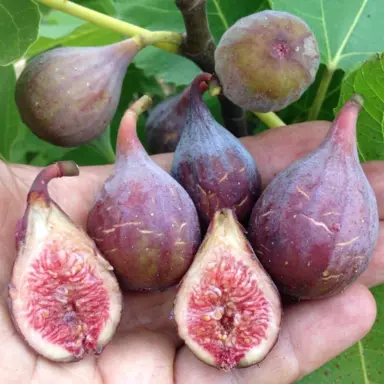
The number of figs a fig tree produces depends on the age and size of the tree, the variety, the climate, and how much care they receive. A guide for a fig yield based on age is as follows:
Of course, there are a few things influencing these estimates:
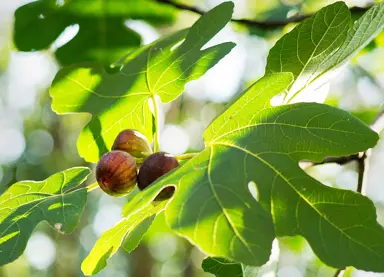
There's no scientific evidence to suggest having a fig tree brings good luck, but culturally, it can be seen as positive. In some cultures, particularly southern Italy, fig trees are seen as symbols of good luck and protection. People believe planting one near their home wards off evil spirits and brings good fortune. There are also some negative superstitions around fig trees, but these are less common. For instance, some cultures associate them with bad dreams or misfortune.
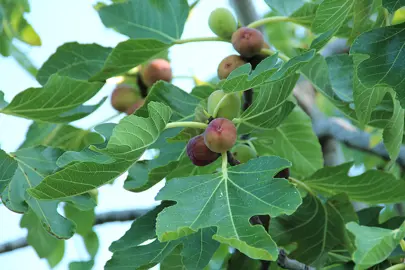
Fig trees are attractive plants with interesting features. Some of their identifying characteristics include:
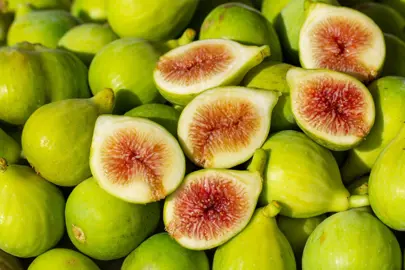
A fig is a unique type of fruit that technically isn't a fruit at all! It's borne from a tree called Ficus carica, but the fleshy part we enjoy isn't a single seed-bearing structure like a typical fruit. A fig is a syconium, a fleshy receptacle that houses many tiny flowers inside. Each flower develops into a small, single-seeded fruit (achene) – those tiny crunchy bits you might encounter when eating a fig. The fleshy interior around these achenes is what we typically consider the "fruit" of the fig tree.
There are over 700 named varieties of figs, all belonging to the species Ficus carica. They come in various sizes, colours (from green to deep purple and black), and flavours (ranging from sweet and mild to rich and intense). They are categorized based on their pollination needs:
Figs are known for their sweetness with a subtle honey or nutty flavour. They can be enjoyed fresh, dried, or preserved. and baked goods.
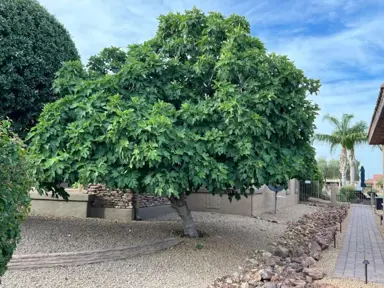
Fig trees are special for a number of reasons:
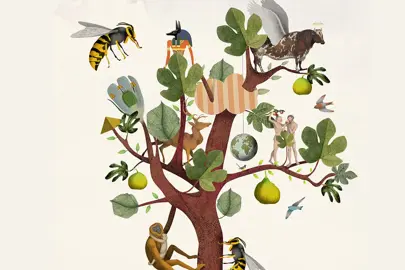
There are a couple of interesting myths about fig trees.
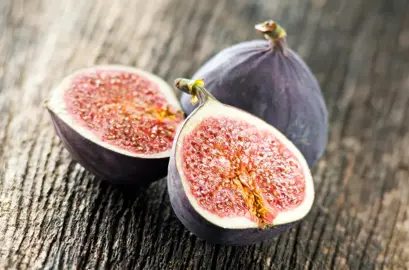
Fig trees have a unique flowering habit compared to other fruit trees. The flowers are tiny, inconspicuous, and are borne inside a structure called a syconium, which looks like a small pear or fig itself. You won't see petals or traditional flower parts. Many fig varieties can flower and fruit two times a year, depending on the climate and variety. The first breba crop forms on the previous year's growth in spring or early summer. The main crop matures on the current year's growth in late summer or autumn.
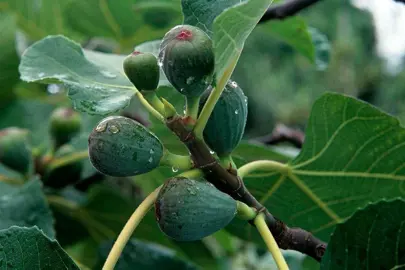
Most fig varieties start to produce fruit within 2-3 years of planting. However, some varieties may take up to 5 years to start fruiting. The fruit typically ripen in summer, but the exact ripening time will vary depending on the variety and the climate.
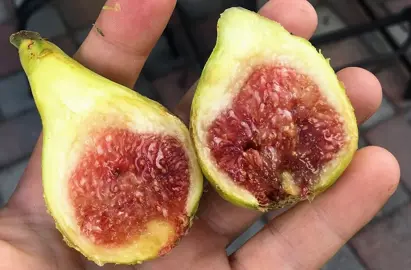
The season for Figs is late summer and autumn. However, there can be some variation depending on the weather and the specific variety of fig tree. Some fig varieties produce a small breba crop in late spring on the previous year's growth. The main crop ripens in late summer to autumn on the current year's growth.
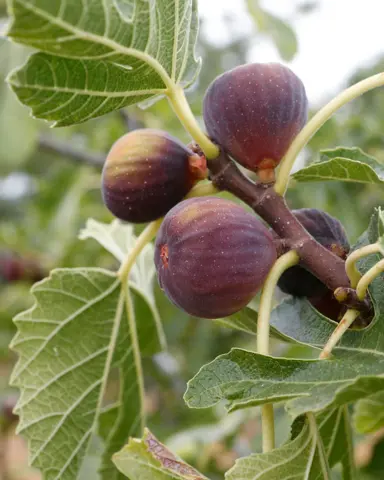
Fig trees grow in relatively dry climates with long, hot summers. They are native to Western Asia, but they are now cultivated in many parts of the world, including Mediterranean regions, California, Florida, Australia, and New Zealand. They prefer a well-drained soil and a full sun position that is sheltered from strong winds.

There isn't a single, universally agreed upon reason why Jesus cursed the fig tree in the Gospels. The main interpretations are:
The story is found in all three Synoptic Gospels (Matthew, Mark, and Luke) but with slightly different details. It's important to note that the cursing of the fig tree is seen as a prelude to a larger message about judgement and the importance of following God's will.
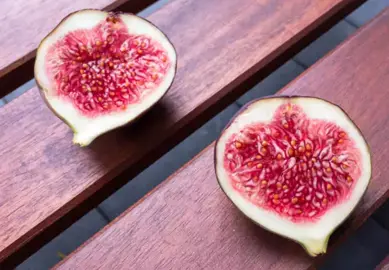
Fig gets the nickname "fruit of heaven" for a couple of reasons, mainly stemming from religious references and its perceived qualities. In the Quran, there's a whole Surah (chapter) called At-Tin, which translates to "The Fig." This Surah starts with an oath by the fig and the olive, signifying their importance. The Hadith (sayings and teachings of Prophet Muhammad) also mentions figs, with the Prophet saying, "If a fruit ever descended from Paradise, I would say that this is it...".
Figs have been cultivated for millennia and were likely one of the first domesticated fruits. Their sweetness, abundance, and unique structure might have led people to associate them with something heavenly or perfect.
Propagating Fig Trees is a relatively straightforward process when you have the right advice. Cuttings are generally easily rooted, and our articles give you the best chance of doing this successfully and without wasting time.
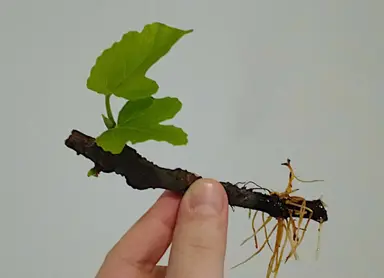
Fig tree cuttings can be rooted in water. However, the success rate generally sits around 30-40%. It is important that the water is changed every 2-3 days and does not contain chlorine. Place the cuttings in a warm spot out of direct sunlight.
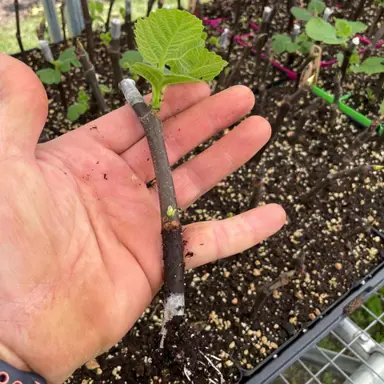
Fig trees are propagated from stem cuttings. Semi-hardwood cuttings are usually taken from autumn until mid-spring. A stem about 8-10 cm long is trimmed into a cutting using secateurs with 2-3 buds at the top and just below a node. Any leaves are usually cut off as they tend to drop off during the rooting process and can add to moisture loss from the cutting. The cutting is dipped in rooting hormone then inserted into propagation growing media. The tray of cuttings is placed under mist with bottom heat also applied. The cuttings will have taken root inside of four weeks as a general rule.
Caring for Fig trees plants is about making sure the plants are thriving. Our plant care articles provide the necessary details to give you the greatest chance of success. Afterall, there is nothing worse than investing in the plants, putting the effort into planting them, and then having them fail. Therefore, follow our advice and give yourself the best chance of success.
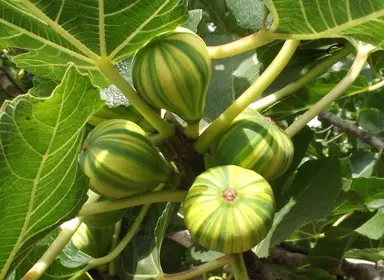
Caring for a Fig tree is all about knowing what to do in each season. Even though they are low maintenance plants, they will benefit from the attention you provide.
Winter is the perfect time for mulching around your plants. Organic matter such as compost or sheep pellets should be spread liberally around the plants and then overlaid with a mulch. The Plant Company has two very good options for mulch. The first is coco fibre matting which is made from the husks of coconuts. It breaks down to become part of the soil within two years. The second is the black plastic matting which will last 20 years or more. In both instances The Plant Company recommend stones, bark chip, or other similar products be spread over top of the mulch for aesthetic purposes. The Plant Company do not recommend adding fertiliser during winter as this is better applied in spring so less is wasted. However, adding organic matter is quite okay.
Spring is the perfect time for fertilising the plants as they start to bounce into life and flower buds begin to open. The Plant Company has fertilisers which have been specially blended for different plants and in this instance, our fruit tree fertiliser will give them the correct boost and keep them fed for 12-months. A suitable alternative is organic fertiliser which will also keep them well fed but it will require a secondary application in autumn.
Summer is when the plants need regular watering and this should be undertaken daily on the hottest days. Plants that are establishing need particular attention as their root system will not have penetrated deep enough to secure consistent moisture yet. The Plant Company recommends a deep watering and then allow the plants to dry out for 2-3 days (or more) before the next watering.
Caring for Fig tree in autumn is all about finishing any trimming and keeping the plants healthy. Foliar feeding using a liquid fertiliser can be undertaken during spring, summer, and autumn if you have time but this is not essential if solid fertiliser and/or good amounts of organic matter have already been applied. If you think the plants need an extra boost or have some yellowing, however, a liquid fertiliser won’t hurt.
Winter is the time to undertake any pruning. The goal of is to ensure the trees are open for good air-flow and light penetration. Winter is also when dead leaves and any spent fruit should be cleaned up to reduce the chances of disease.
Check plants for any pest or disease issues during spring, summer, and autumn. If anything is looking a little bit unusual at any time of year, refer to our section on dealing with issues for a solution.
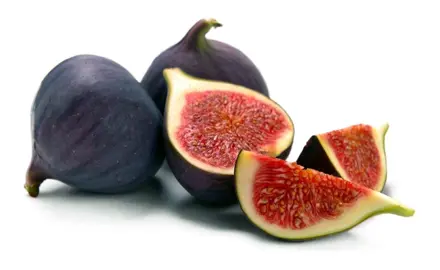
There are several reasons why your figs might not be turning purple, even though they should. Here are some possibilities:
Growing a Fig tree well is generally easy when you get a few of the basics right. This involves planting them in the right soil type, choosing the most ideal planting position, and ensuring the plants have the essentials to thrive. The Plant Company has the right advice in these series of articles to give you the greatest chance of success when growing a Fig Tree.
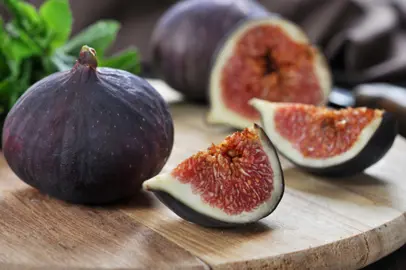
Figs grow well in New Zealand. They are a subtropical fruit tree that thrives in warm, sunny climates. They are well-suited to Northland, Auckland, Waikato, Bay of Plenty, and Gisborne.
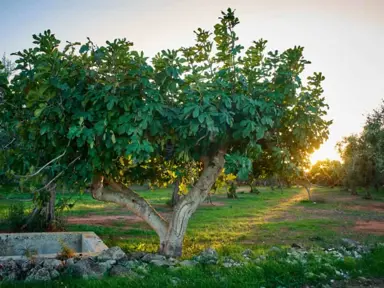
Choose a full sun position with good drainage and moderate shelter for your Fig Tree. The hole should be dug to at least 50-75% deeper and wider than the container the plant is currently growing in. A good planting spade makes this job a lot easier. The Plant Company recommends incorporating compost or sheep pellets into the soil to provide additional organic material, but this is not essential. Do not put fertiliser in the bottom of the hole, rather spread that on the soil surface after planting, and preferably do this when the plant is actively growing in spring.
Remove the plant from the container it is growing in by either pulling it free or by cutting the bag. We recommend cutting the bag, especially for larger grade plants, to minimise any chance of damaging the roots. The Plant Company does not advise cutting through roots, even if the plant is rootbound, as that injures the plant. Our article, Managing Rootbound Plants explains this in more detail.
Now place the plant in the hole and make sure it is level with the soil surface before filling in around it. If it is sitting above the soil surface, dig more out. If it is below, put in more soil and retest the level. Once the plant is set level with the soil surface, add more soil gradually and firm it around the plant using gentle pressure from your fingers as you go. Scatter Fruit Tree Fertiliser across the soil surface after planting and the give the plant a good watering. If the plant is taller than 30 cm you might want to consider staking it to give it a bit of extra support and use tree ties for secure and appropriate holding.
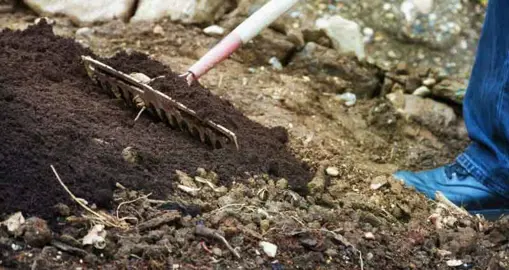
Fig trees are not overly fussy about the soil type, but good preparation will help them thrive and produce great yields:
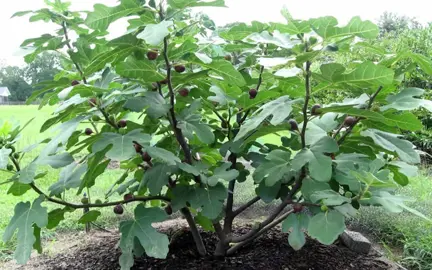
The best month to plant figs is any time from autumn until early spring. This will give the plant a chance to establish itself before the heat of summer arrives. You can plant in summer also provided particular attention is paid to watering.
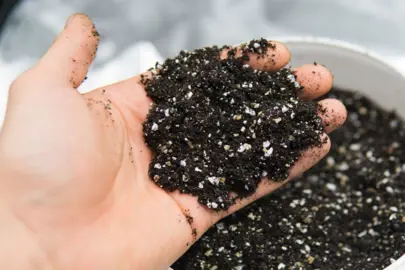
Only potting mix should be used when Fig trees are grown in a container. Often people will try and cut corners and use soil or mixes that contain both soil and potting mix with poor results. The same applies to when plants are potted up with compost as it holds too much moisture. Soil also contains weeds and tends to become compacted in a container, hence why it is not used in this manner. The Plant Company has nursery grade potting media which is pre-loaded with the correct amounts of fertiliser and micro-nutrients to keep the plant sustained with nutrition and actively growing for the next 12-months. After 12-months, simply add a couple fertiliser tablets to keep the plant fed for the next 12-months.
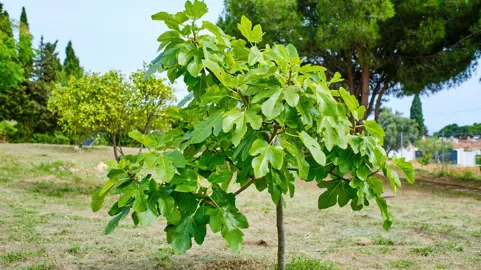
The best place to plant your fig tree depends on your location and climate, but here are some of their preferences to help you determine the optimum site:
The Plant Company have produced this series of articles to provide advice for pruning Fig trees so you can manicure your plants with confidence and success.
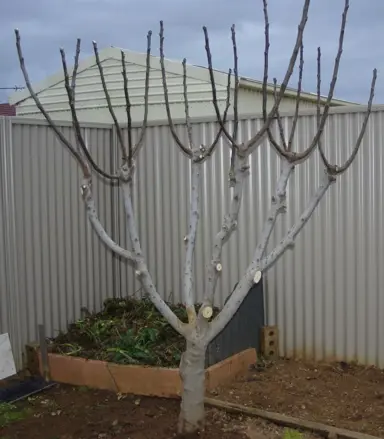
Pruning your fig tree properly will encourage better fruit production and a tidier tree that is more manageable. Start by removing crowded, weak, or dead branches to improve air circulation and allow light to reach the interior of the tree. Cut back overly long branches to a bud or side shoot. Doing this will promote branching and increase the fruiting potential of the tree. Such branches are usually cut back by about a third to half. Finally, shape the tree so it looks balanced around the trunk and is tidy. As a general guide, you should be able to throw a tennis ball through the tree after pruning!
On younger trees that have a single leader, you may want to take the top out of the leader. Doing this will encourage the lower branches to grow and become stronger. This is a great way of keeping the trees shorter overall which makes picking the fruit easier.
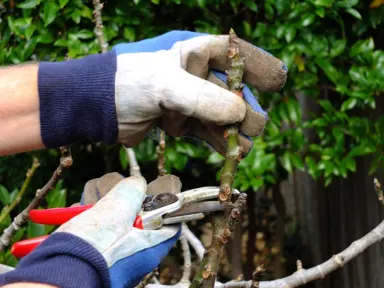
Trimming a fig tree is about shaping regularly rather than pruning to open the tree up. Our earlier article explains how to prune a fig tree if that is the goal. The first element to trimming is to remove the branches from the trunk to the height you want the main branches to start from. We call this ‘standardising the tree’ and the goal is to create a trunk that is about 1 m or more in height to the ground that is free of branches. A standardised tree is more aesthetic than a non-standardised one but can take a year or two to achieve. Be sure to remove no more than one-third of the overall vegetation as you trim the trunk to the desired height. Next, aim to trim the exterior branches so the tree is balanced around the trunk and well-shaped. This often involves standing back and viewing it from a few angles as trimming is undertaken. Again, the rule is to remove no more than one-third of the overall vegetation.
Light trimming can be undertaken during any season. However, where more aggressive cuts are made, The Plant Company recommends this is done during winter.
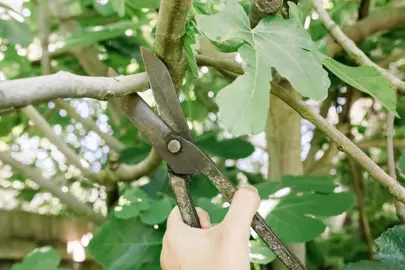
The best time to prune a fig tree is in late winter or early spring, just before new growth begins. This allows the tree to heal quickly and does not waste the plants efforts for producing fruit. Avoid pruning during freezing temperatures or when heavy frosts are expected. You can prune during summer but this will likely be at the expense of yield as branches bearing fruit are likely to be removed in the process.
Whether you need assistance finding the plant you’re looking for or you simply want to know more about who we are and what we do, we invite you to get in touch with us today. A member of The Plant Company team will get back in touch as soon as possible.


